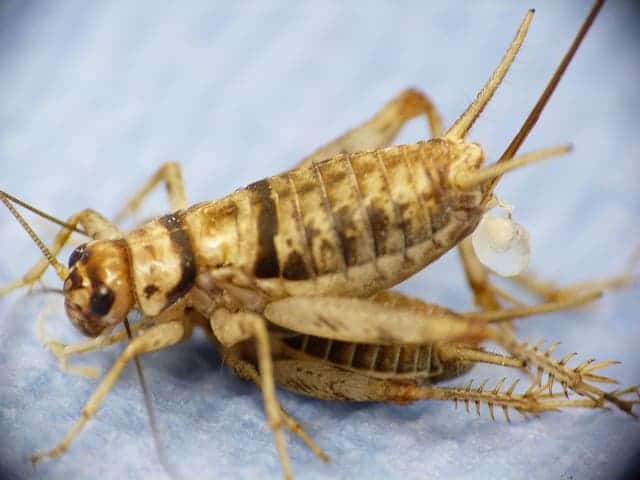
Meet one of slickest and twisted virus nature has to offer. Called IIV-6/CrIV , researchers at Dalhousie University in Nova Scotia discovered the virus effectively castrates crickets, while promoting sexual activity at the same time like an aphrodisiac so it can spread. It’s an incredibly effective strategy for the virus, but can we learn anything from it?
Like with most insects, crickets’ mating ritual seems oddball to say the least for us humans who are used to more familiar forms of intercourse. The male and female first initialize courtship by brushing each others antennae – no tongue! Then the female mounts the male and brushes his abdomen, which secrets sperm. The sperm is pumped into the female for a good half an hour, which will go on to fertilize her hundred or so eggs.
A viral aphrodisiac
For the bugs infected with IIV-6/CrIV everything goes according to plan, seemingly. The infected male or female go on with their business per usual, only there won’t be any offspring left in the process, since the virus essentially sterilizes the crickets, while promoting mating at the same time. Soon enough, following mating, the female will become swollen and blue, unable to lay eggs.
Biologist Shelley Adamo closely inspected the phenomenon by dissecting a few infected crickets in the lab. She found the insects’ fat bodies became bloated and blue. The fat body is the perfect headquarters for interfering with communication between the immune system and the nervous system, and for altering its host’s behavior and physiology. Here, the organs were full of microscopic hexagonal viral particles that had packed themselves into a crystalline shape, giving the blue color.
The virus castrates its hosts, but otherwise makes them look healthy. The biologists found that the male could still produce sperm, but the cells were immobile, while females only had a few eggs or none, instead of a hundred or so typically found in uninfected samples. Despite this, the males still wanted to mate – they were actually more sexually active than otherwise. Typically, uninfected males wait for 10 minutes or so before serenading their mates. The males infected by the IIV-6/CrIV virus went to business in under 3 minutes. Meanwhile, the females, whether they had the virus or not, all mounted the males without discrimination.
Sick animals usually don’t end up transmitting their genes either because they’re unable to perform sexually due to weakness or can’t find a mate since they look unattractive. The virus is a slick one. Infected crickets not only have a sped up courtship, their immune system is actually boosted to make them more attractive. It’s a brilliant strategy on behalf of the virus, one that helps it spread its wings along with the cricket.
A winning strategy
Other parasites and virus do it, too. Rabies makes its host more aggressive so it can infect other organisms. Hairworms turn their grasshopper hosts into suicide jumpers so they can get to water. Some wasps force spiders to build weird webs to support their cocoons.
Some may wonder, could we engineer a virus like IIV-6/CrIV to destroy pests? The short answer is yes. For instance, scientists bred mosquitoes with a gene that is lethal to the insect, but only activates in the second generation. So the mosquitoes mate as per usual, but their offspring die in larva form. The strategy seems to be effective for warding off diseases like malaria which infects 500 million people each year and kills around two million. You wouldn’t want to do something like with anything, though. The ecoystem is in an fine balance – wipe out a parasitic species and there’s no telling what might happen next. Ecological niches are in place for a reason and they rarely go unserved. There will always be organisms waiting to fill the gap left, so you could end up doing more harm than good.
The findings on the IIV-6/CrIV were detailed in a paper published in The Journal of Experimental Biology.


